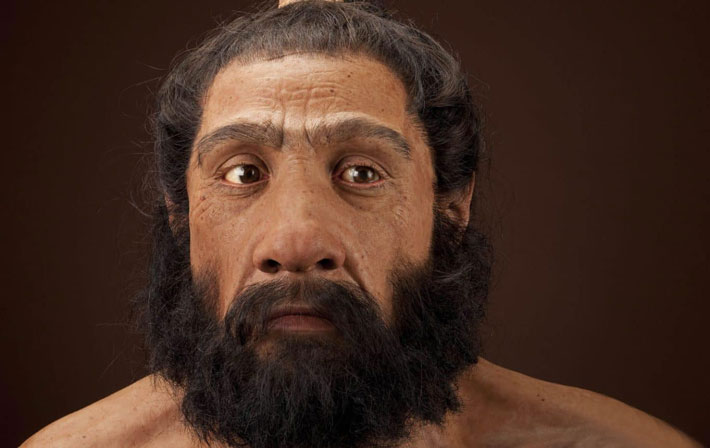 RALEIGH, NORTH CAROLINA—According to a statement released by North Carolina State University, Steven Churchill of Duke University and Ann Ross of North Carolina State University and their colleagues collected measurements of the skulls of 13 Neanderthals, 233 prehistoric Homo sapiens, and 83 modern humans to see if they could detect any evidence of interbreeding in the facial structures. “Neanderthals had big faces,” Churchill explained. Neanderthals and modern humans are thought to have mixed in the Near East—a region ranging from North Africa to Iraq—as modern humans migrated out of Africa but before they spread to Asia, he added. After the researchers accounted for environmental variables, they found that the size and shape of some facial features allowed them to track the possible mixing of the Neanderthal and modern human populations. The data also suggests that several generations after mixing with Neanderthals, modern human faces became smaller again. “But the actual shape of some facial features retained evidence of interbreeding with Neanderthals,” Churchill said. The team members would like to analyze skull measurements from additional populations, including the Natufians, who lived more than 11,000 years ago in what is now Israel, Jordan, and Syria, Churchill concluded. Read the original scholarly article about this research in Biology. To read about genetic markers that some people living today inherited from Neanderthals, go to "Neanderthal Genome," one of ARCHAEOLOGY's Top 10 Discoveries of the Decade.
RALEIGH, NORTH CAROLINA—According to a statement released by North Carolina State University, Steven Churchill of Duke University and Ann Ross of North Carolina State University and their colleagues collected measurements of the skulls of 13 Neanderthals, 233 prehistoric Homo sapiens, and 83 modern humans to see if they could detect any evidence of interbreeding in the facial structures. “Neanderthals had big faces,” Churchill explained. Neanderthals and modern humans are thought to have mixed in the Near East—a region ranging from North Africa to Iraq—as modern humans migrated out of Africa but before they spread to Asia, he added. After the researchers accounted for environmental variables, they found that the size and shape of some facial features allowed them to track the possible mixing of the Neanderthal and modern human populations. The data also suggests that several generations after mixing with Neanderthals, modern human faces became smaller again. “But the actual shape of some facial features retained evidence of interbreeding with Neanderthals,” Churchill said. The team members would like to analyze skull measurements from additional populations, including the Natufians, who lived more than 11,000 years ago in what is now Israel, Jordan, and Syria, Churchill concluded. Read the original scholarly article about this research in Biology. To read about genetic markers that some people living today inherited from Neanderthals, go to "Neanderthal Genome," one of ARCHAEOLOGY's Top 10 Discoveries of the Decade.
Skull Study May Offer Insights Into Hominin Interbreeding
